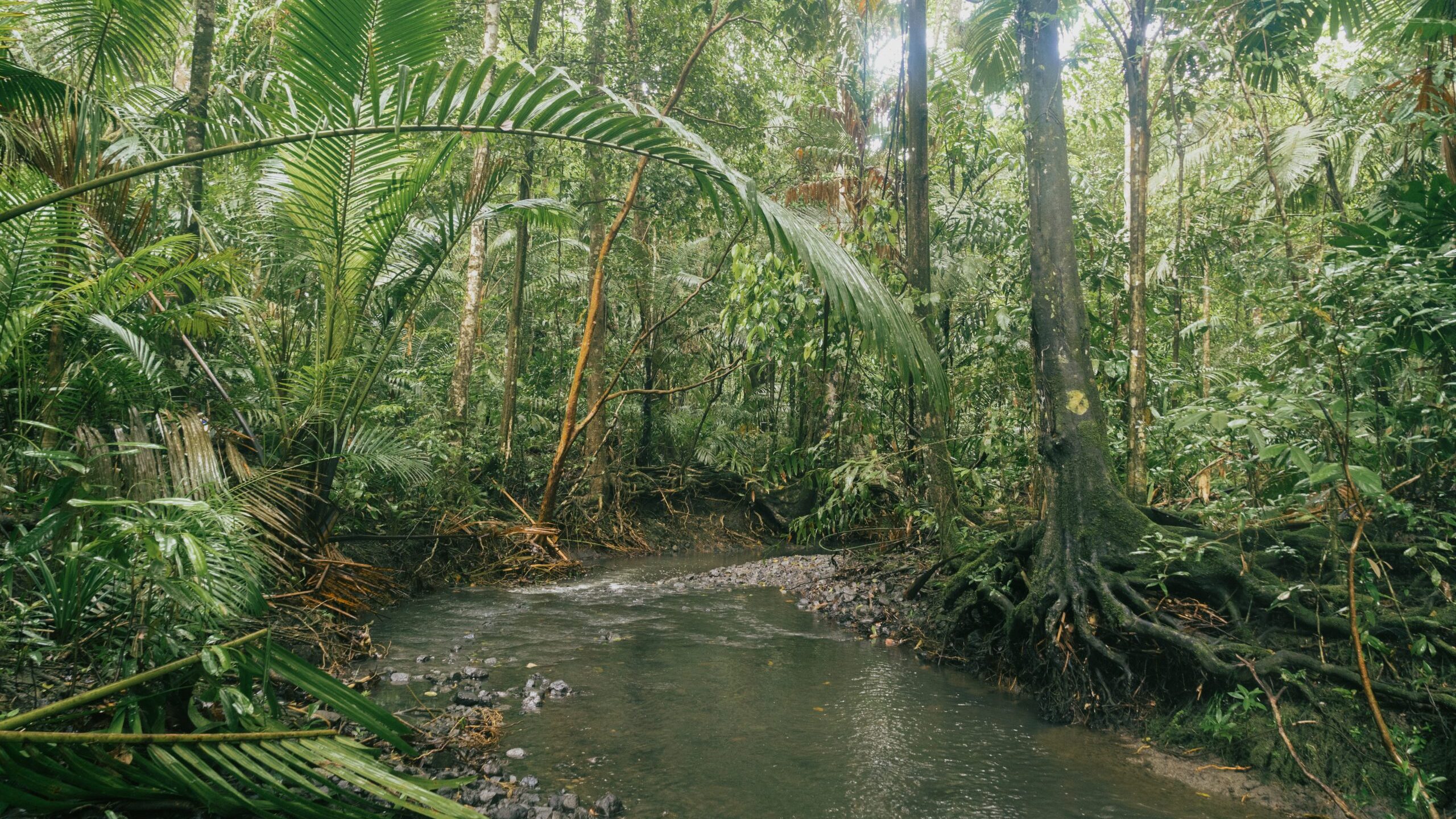
Life, language and living in Papua New Guinea’s rainforests
For generations, the people here have cared for the forest, maintaining a deep bond with the land just as their ancestors have for thousands of years.
For more than 14 years, we’ve partnered with incredible communities in Papua New Guinea’s rainforests.
This is their spotlight. A chance to take a closer look and celebrate the people we work with, their deep connection to the rainforest, and the knowledge that keeps it thriving.
Life in Papua New Guinea’s Rainforest
Morning light filters through the canopy as smoke curls from cooking fires. In Papua New Guinea’s rainforest, a new day begins with the rhythm of life. Families tending gardens. Children getting ready for school. The sounds of communities connected to the rainforest that sustains them.

Cultural Richness and Language
Papua New Guinea holds the world’s third largest tropical rainforest and is one of the most culturally rich populations. More than 800 languages are spoken here. Every community has their own stories, songs, dances, and ways of understanding the world. All passed down and adapted for generations.
People from Sololo, Kondu, and Wadauda are often known as the ‘bush people’ of Milne Bay, a name that reflects the beautiful, remote highlands they call home. These communities speak Kanasi, one of the many unique languages found in Papua New Guinea.
Along the coast, the Wabumari people speak Suau. Like many across the country, they also speak English, Motu, and Tok Pisin – three of Papua New Guinea’s most widely used languages. It is even common to switch between three or four languages in a single conversation. Every language is a bridge to family, land, and knowledge.

Practical Knowledge and Traditions
Across Milne Bay, celebrations are a time to reconnect and keep culture alive. As night falls, children gather around the fire to listen to tales and myths told by their grandparents, keeping traditions burning bright. Children learn which bird calls guide them home, which plants heal, and how to respect sacred sites in the rainforest. Identity, education and rainforest protection is deeply intertwined here.

Connection to the Rainforest
Many Milne Bay communities trace lineage through women, the landowners in matrilineal societies. The rainforest is often called “mother,” not out of sentiment, but recognition. The rainforest provides food, medicine, materials and protection. It is their lifeline. In return, people care for it with skill and respect.
Gardens thrive with yam, taro, banana, and aibika. Medicinal plants treat everyday illnesses. Timber becomes homes and canoes. The forest is not a backdrop. It is an active partner in life. Understanding its rhythms makes these communities the most effective protectors of rainforest on Earth.
This deep connection to the land makes local communities the best guardians of their forests. They understand the rhythm of the seasons, the movement of animals, the feel of the soil, and the signs of the weather. They know when to plant, harvest, hunt, or fish. Their care combines generations of knowledge with modern conservation to keep the rainforest thriving.

Climate Change and Resilience
Climate change is testing that relationship. The people here live its reality every day. Unpredictable rains destroy crops. Floods and landslides threaten homes. Rising temperatures alter forest growth.
For people so deeply connected to the land, climate change isn’t an abstract idea — it’s personal. Yet through collective knowledge, sustainable gardening, and careful forest management, these communities continue to adapt and lead the way. They show what true resilience looks like.
We back these brilliant rainforest communities in Papua New Guinea because they are the best stewards of their land. With the right resources, they can keep doing what they have always done, protecting the rainforest for all of us.
Keep Papua New Guinea’s Rainforests Thriving
This December, you can stand with the people who keep Papua New Guinea’s rainforests alive.
From Monday 1st to 31st of December, every pound you give will be matched at no extra cost to you as part of our match funded campaign.
Your support helps strengthen the knowledge, resilience, and rainforest protection that these communities have sustained for generations.